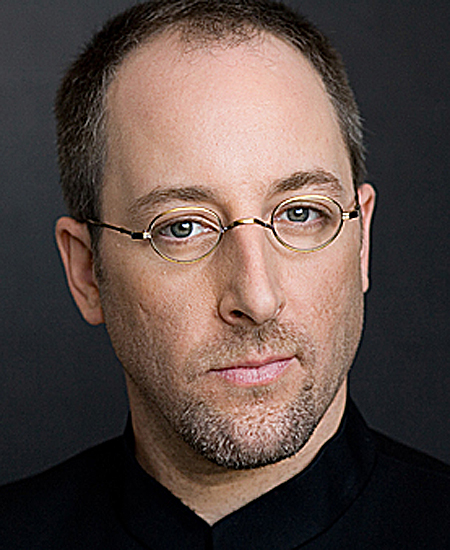AXIOM closes its season with world-class performances

Jeffrey Milarsky conducted AXIOM in music of Adams, Boulez and Abrahamsen Thursday night.
The program booklet for Thursday night’s concert from AXIOM, at the Juilliard School’s Peter Jay Sharpe Theater, noted that the event honored composer John Adams’ 70th birthday. That was more than an honorable mention, of course, and more than sufficient motivation to program Adams’ Grand Pianola Music. But Adams—who will be fêted in several more concerts next month—was less the centerpiece of the concert than the ensemble itself, which played not just expertly but musically and beautifully.
AXIOM is a student ensemble, conducted by Jeffrey Milarsky, that stands out on a New York City scene that includes some of the finest new music ensembles on the globe. The players have technical polish, but their sense of ensemble is top-level, and a feeling of dedicated involvement with and commitment to the music comes through in their playing. Be it from their youth, or their amateur status, there is a fresh attitude as well.
On the first half, AXIOM played Boulez’s Derive I and the opening part of Hans Abrahamsen’s Schnee. Both were marvelous performances.
The delicate, precise playing in Derive I was ideal for this elegant, quasi-miniature score. Mindful of dynamics and with a deliberate tempo that left windows of open space, the musicians took care with the weight and color of each note. This piece is one that shows most prominently Boulez’s place among Debussy’s descendants; but the young musicians clearly heard Stravinsky as well, which brought out intriguing new facets and depths in the music.
AXIOM played Canons 1a and 1b from Abrahamsen’s large scale Schnee, subtitled Ten Canons for Nine Instruments. This was more than a taste—those first two canons originally constituted the complete work. Their compositional success gave Abrahamsen the intuitive to expand the piece.
Schnee means snow, but with any other title the piece would still convey the quality of a near-silent peaceful winter scene. The musical material is sparse—a limited number of pitches are repeated with subtle rhythmic variations—and the dynamics hover between piano and pianissimo. Just as falling snow dampens most sounds so the ones that carry through are heightened, so Schnee heightens the prominence and meaning of the tiniest change or inflection.
While Milarsky expertly managed the dynamics, AXIOM played with a sense of excitement. The second canon was mesmerizing with each repetition more pleasurable than the last. As the music became more familiar, so it became more involving. This was an excellent performance, packed with intrigue and meaning.
Grand Pianola Music was equally superb, and the programming choice was in itself brilliant. As accomplished as Adams’ career is, his output has varied widely and wildly in quality. For each work that has rapidly become part of the standard classical repertory, there is at least one piece that is crippled by self-important self-involvement.
Grand Pianola Music suffers from none of that, it is the composer’s least self-conscious work and, because of that, might be his greatest.
AXIOM certainly made it sound that way. The playing tapped into what sounded like personal and universal truths in the music. The piece falls on the balance between Adams’ old minimalism and current romanticism; it is evocative without narrative and for the listener is open to deep, personal exploration.
Adams grew up in New England then made his way west to San Francisco, off the Continental plate and onto the Pacific one, where he became the artist he is—the westward movement and transformation that is essential to the American myth.
And so did AXIOM motor forward, heading across the wide-open plains, then crossing and descending, with a spectacular sense of sweep, passing the Rockies and Sierra Nevadas. The musicians played with a terrific, full pulse that one could feel in the body, and that physicality reinforced the greatness of the music.
Tengku Irfan and Derek Wang played the concertante piano parts with crisp, bright, vivacity, and percussionist Sae Hashimoto deserves special mention for her remarkably dynamic drumming. Blends and balances were ideal, and the amplification of the three vocalists—Charlotte Mundy, Jamie Jordan, and Kate Maroney—balanced perfectly with the acoustic ensemble.
The cadence in the first movement was thrilling, the still waters of the slow movement ran deep, and the finale, “On the Dominant Divide,” was absolutely soaring. The major groups that have played this music, like the San Francisco Symphony, could not hold a candle to the care, excitement, and joy these young musicians expressed Thursday night.





